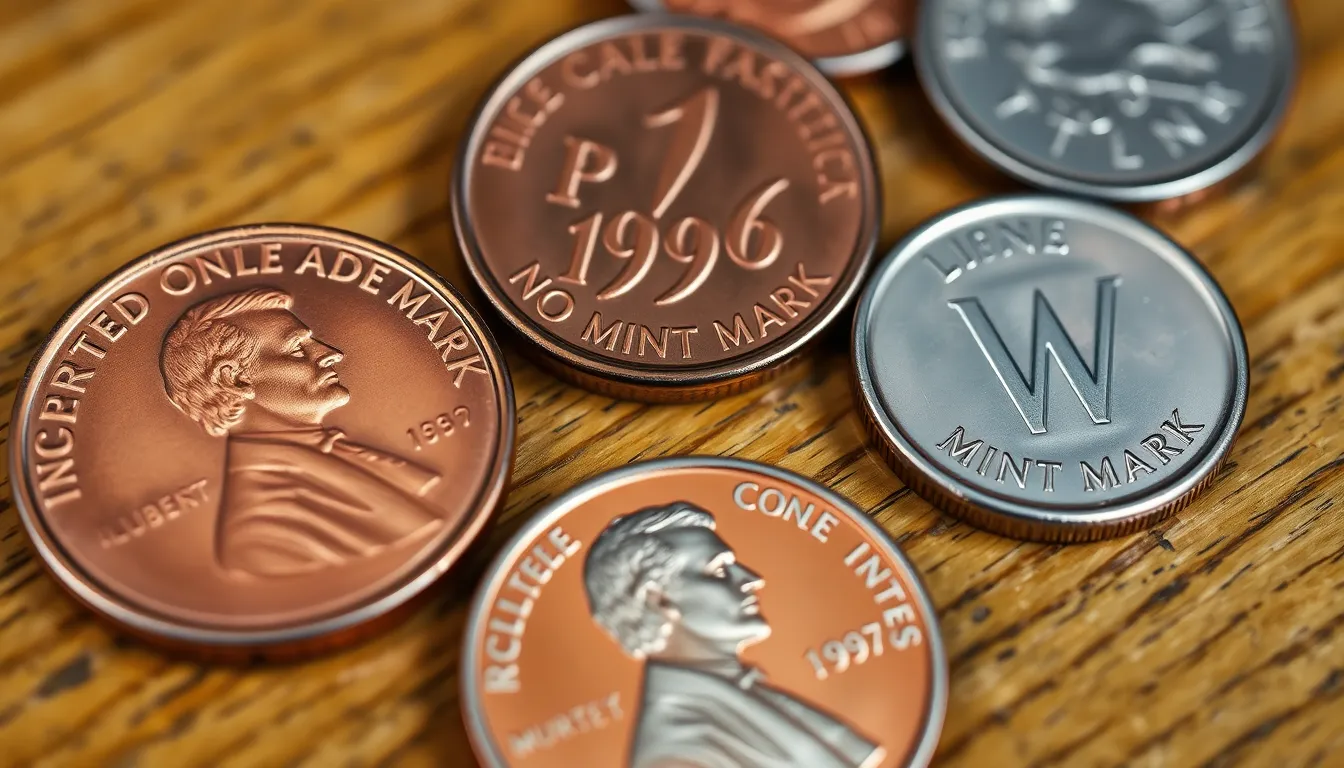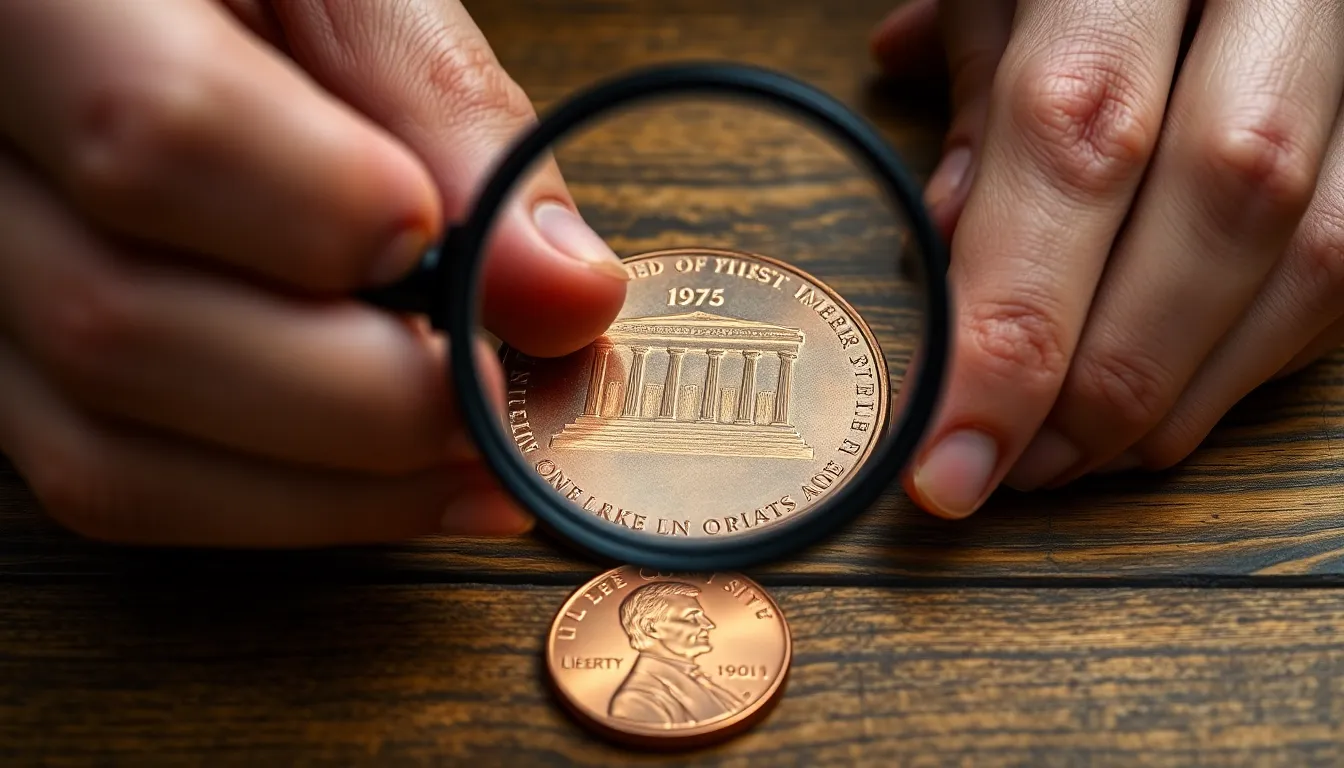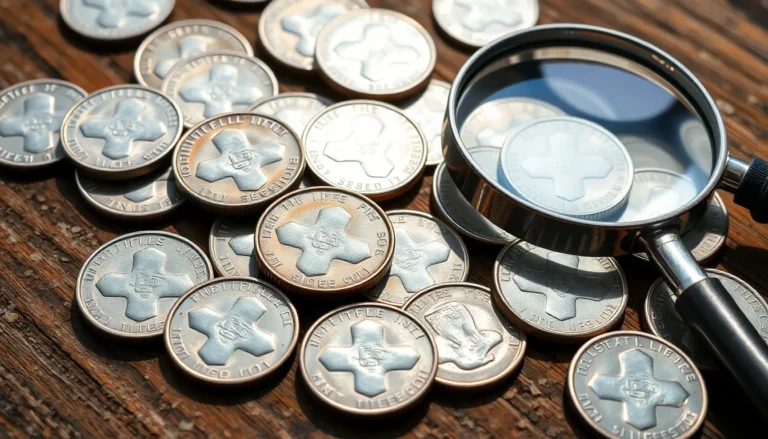In a world where every penny counts, it might surprise you to learn that some modern pennies are worth more than their face value. That’s right—those little copper coins cluttering your couch cushions could be hiding a surprising fortune. If you’ve ever thought about tossing them into the nearest wishing well, hold that thought!
Table of Contents
ToggleUnderstanding Modern Pennies Worth Money
Modern pennies, produced by the U.S. Mint since 1982, have potential value beyond their one-cent face value. Collectors often seek specific types or conditions that can elevate a penny’s worth dramatically.
Definition of Modern Pennies
Modern pennies refer to those minted from 1982 to the present. The transition to zinc from copper took place in 1982, resulting in two types: copper pennies (1982) weighing 3.11 grams and zinc pennies weighing 2.5 grams. Both categories contain unique features, such as year, mint mark, and condition, which influence their overall value. Certain variations, like the 1983 copper penny, are rare and significantly sought after by collectors.
Importance in Coin Collecting
Modern pennies play a vital role in coin collecting due to their unique features and occasional rarity. Many collectors focus on finding specific years, mint marks, or errors—like misplaced designs or double strikes. Such anomalies can yield prices far exceeding the typical one-cent value. Awareness of these modern pennies fosters interest among collectors, creating a thriving market for those eager to uncover hidden treasures in their spare change.
Types of Modern Pennies Worth Money

Modern pennies can surprise collectors with their hidden value. Certain types stand out in the market for their rarity and distinct features.
Errors and Variations
Errors and variations in modern pennies significantly increase their worth. Examples include the 1982 “No Mint Mark” penny, where some collectors seek out specific die errors, such as doubling or off-center strikes. The 1995 “Doubled Die” penny is another sought-after variation, showcasing clear doubling on the lettering. Each error attracts attention, leading to prices well above face value. Collectors often pay substantial amounts for these unique coins due to their limited availability.
High Demand Mint Marks
Mint marks on modern pennies also influence their value. For instance, the 1996 “W” mint mark penny is highly prized by collectors because of its limited mintage. Additionally, the 2009 pennies featuring different designs, such as the “Log Cabin” and “Formative Years,” carry a heightened demand. Collectors specifically target these mint marks to enhance their collections. Understanding which mint marks are desirable helps collectors identify valuable pennies in circulation.
Factors That Determine Value
Several key factors influence the value of modern pennies, including their condition, market trends, and demand among collectors.
Condition and Grading
Condition directly affects a penny’s value. Coins in excellent shape, reflecting minimal wear and no significant scratches, reach higher prices. Grading standards, such as the Sheldon scale, classify coins from poor to mint state. Collectors pay more for higher-grade coins due to their rarity and appeal. For instance, a penny graded MS-66 has a significantly higher value than one graded as VG-8. Appraisal services provide reliable grading, aiding collectors in determining a penny’s actual worth based on its physical condition.
Market Trends and Demand
Market trends significantly impact the value of modern pennies. Demand fluctuates based on collector interest, economic conditions, and the availability of specific coins. A spike in popularity for certain years or mint marks can increase prices rapidly. For example, limited editions or error coins often see soaring demand, leading to price hikes. Staying informed about trends through numismatic publications, online auctions, and collector communities helps enthusiasts monitor values effectively. By recognizing these trends, collectors can make well-informed decisions when buying or selling modern pennies.
How to Identify Valuable Modern Pennies
Identifying valuable modern pennies involves understanding specific features and using the right resources.
Tools for Coin Collecting
Collectors need various tools to assess coin value effectively. Magnifying glasses help examine penny details, enhancing visibility of mint marks and design features. Digital scales determine weight, which can indicate authenticity. Coin holders protect coins from wear and tear, preserving their condition. Reference books, such as the “Red Book,” provide essential information about current market values and historical data. Grading guides help collectors classify coins using the Sheldon scale, which ranks coins from poor to mint state. These tools support informed decision-making during purchases and sales.
Where to Find Information
Reliable information sources are crucial for evaluating modern pennies. Numismatic websites offer up-to-date market trends, pricing indexes, and collector forums to share insights. Online auction platforms, like eBay, allow observation of selling prices for rare pennies. Local coin clubs provide opportunities for networking with experienced collectors and accessing resources like newsletters and exhibitions. Social media groups also foster discussions and display recent finds, enhancing knowledge about valuable pennies. Staying connected with these resources sharpens awareness of the market and its fluctuations.
Modern pennies are more than just spare change; they can be valuable collectibles. By recognizing the unique features and variations that elevate their worth, collectors can unlock hidden treasures in their pocket change. Staying informed about market trends and understanding grading standards is crucial for maximizing value.
With tools like magnifying glasses and reference books at their disposal, enthusiasts can effectively identify and assess their coins. Whether it’s a rare mint mark or an error penny, modern coins offer exciting opportunities for both seasoned collectors and casual finders. As interest in coin collecting continues to grow, so does the potential for profit from these seemingly insignificant pennies.




